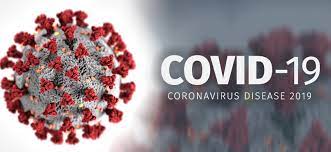Recent research conducted by Maya Spaur and colleagues from the Department of Environmental Health Sciences at Columbia University Mailman School of Public Health in New York City suggests that exposure to drinking water contaminated with arsenic, even at levels below current regulatory limits, may heighten the risk of developing type 2 diabetes (T2D) in urban communities across the United States. The study, published online in Diabetes Care, underscores a stronger correlation between arsenic exposure and T2D incidence, particularly among women and individuals with a lower body mass index (BMI).
The study, drawing data from the Strong Heart Family Study (SHFS) and the Multi-Ethnic Study of Atherosclerosis (MESA), aimed to explore the prospective association between T2D and arsenic levels in both federally regulated community water systems (CWSs) and unregulated private wells. The analysis included 1791 participants from SHFS and 5777 participants from MESA, all of whom did not have T2D at baseline. The median follow-up duration was 14.0 years for MESA and 5.6 years for SHFS.
Participants’ exposure to arsenic from drinking water was estimated based on their residential zip codes, accounting for both regulated CWSs and unregulated private wells. After adjusting for various factors including BMI, sex, age, smoking status, and education, the study found significant associations between arsenic exposure and incident T2D.
In the MESA cohort, where the T2D incidence rate was 11.2 cases per 1000 person-years, doubling of arsenic levels in CWS was associated with an increased risk of incident T2D, particularly among women and individuals with a BMI less than 25. Similarly, in the SHFS cohort, doubling of arsenic levels in private unregulated wells raised the risk of T2D, especially in individuals with a BMI below 25.
Furthermore, the risk for incident T2D surged with CWS arsenic concentrations exceeding 1 µg/L compared to concentrations at or below 1 µg/L.
The authors stressed the importance of further efforts to evaluate the effectiveness of current maximum contaminant levels for water arsenic in the United States. They emphasized the potential of regulation and interventions to prevent arsenic exposure in drinking water, potentially reducing the risk of T2D and other cardiometabolic diseases.
However, the study had limitations, including reliance on zip code-level estimates of water arsenic, lack of data on factors such as bottled water use and tap water consumption, and the relatively short follow-up duration. Additionally, potential residual confounding and measurement errors of exposure were noted as significant limitations.
The research was supported by several institutes under the National Institutes of Health, and no conflicts of interest were reported.
This study adds to the growing body of evidence highlighting the health risks associated with arsenic exposure in drinking water and underscores the importance of ongoing research and regulatory efforts to mitigate these risks and protect public health.











